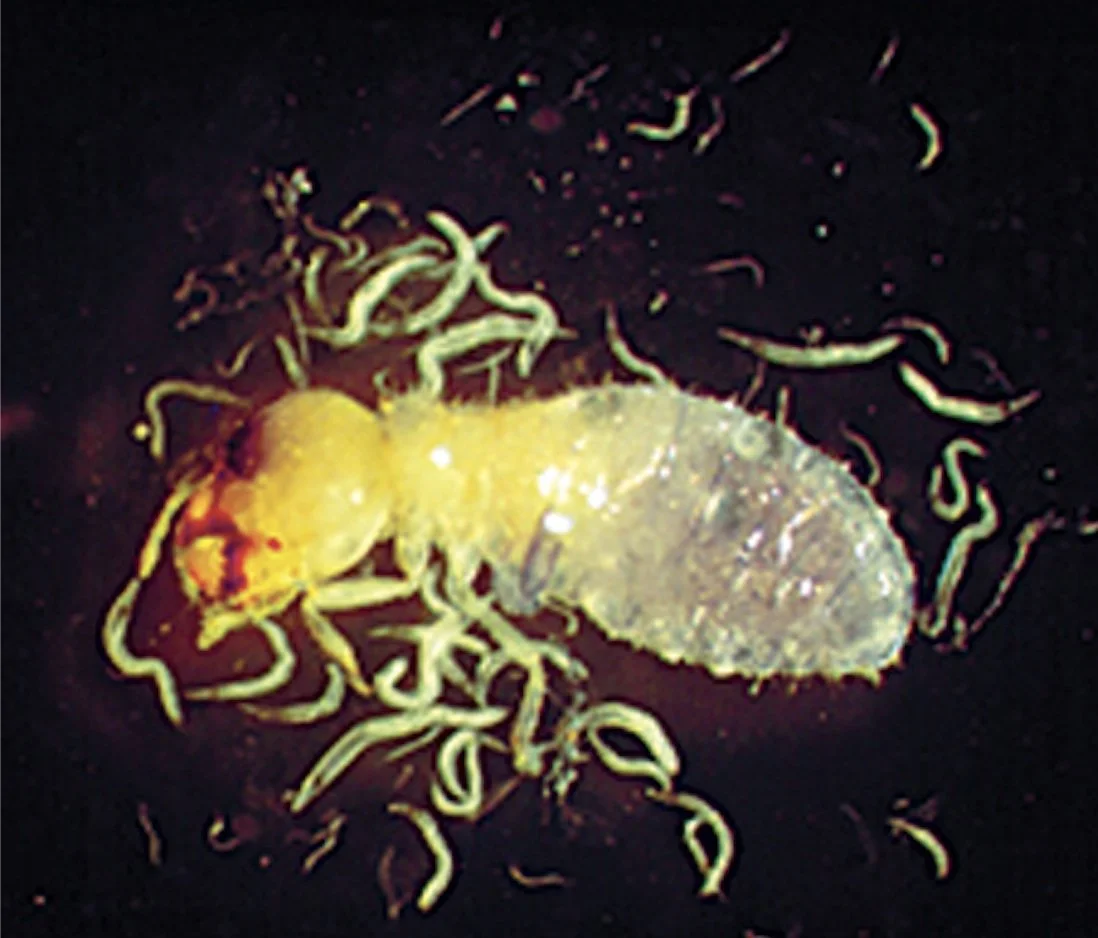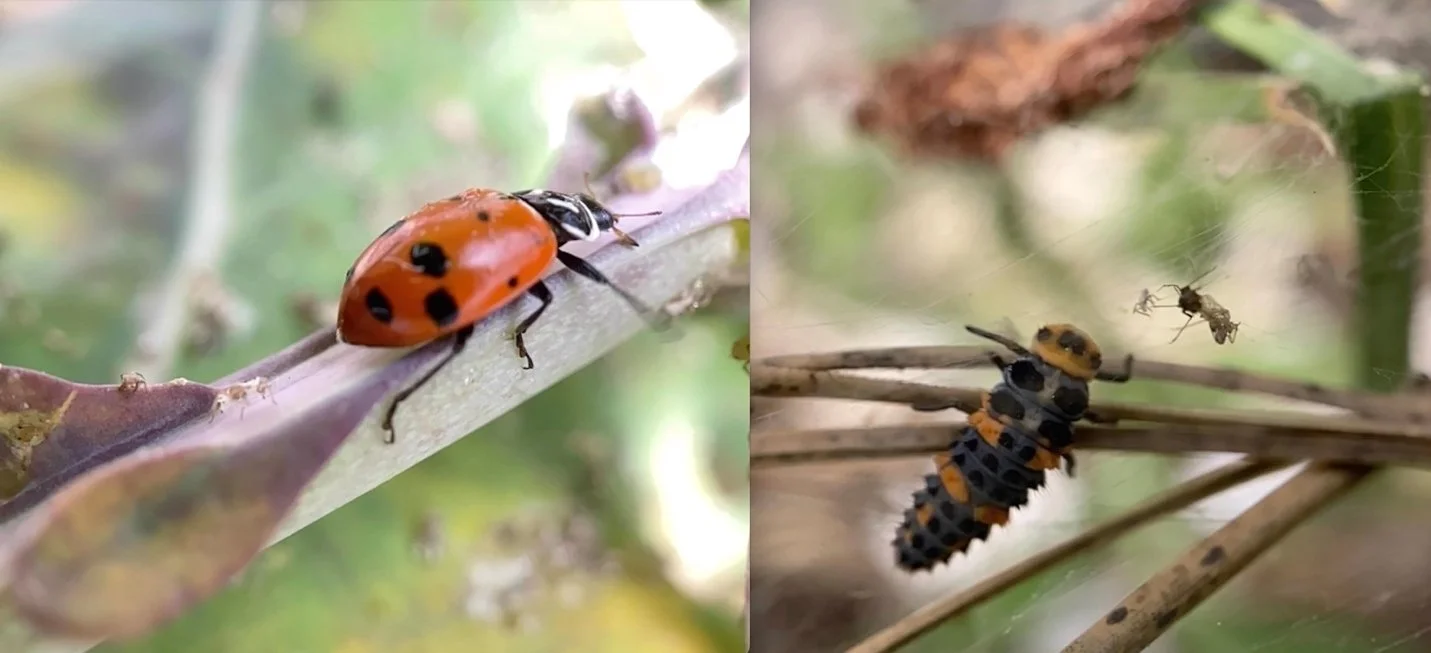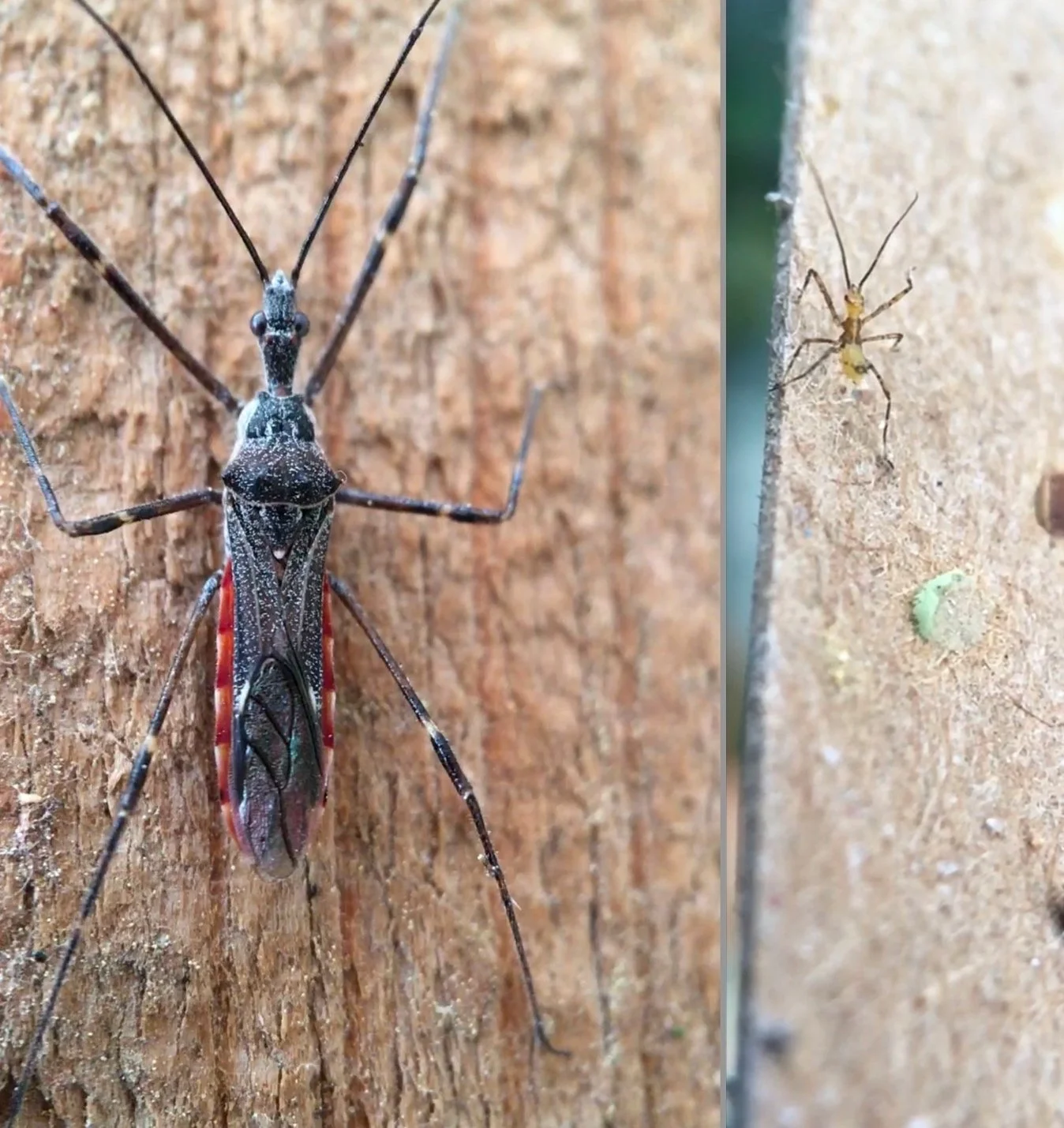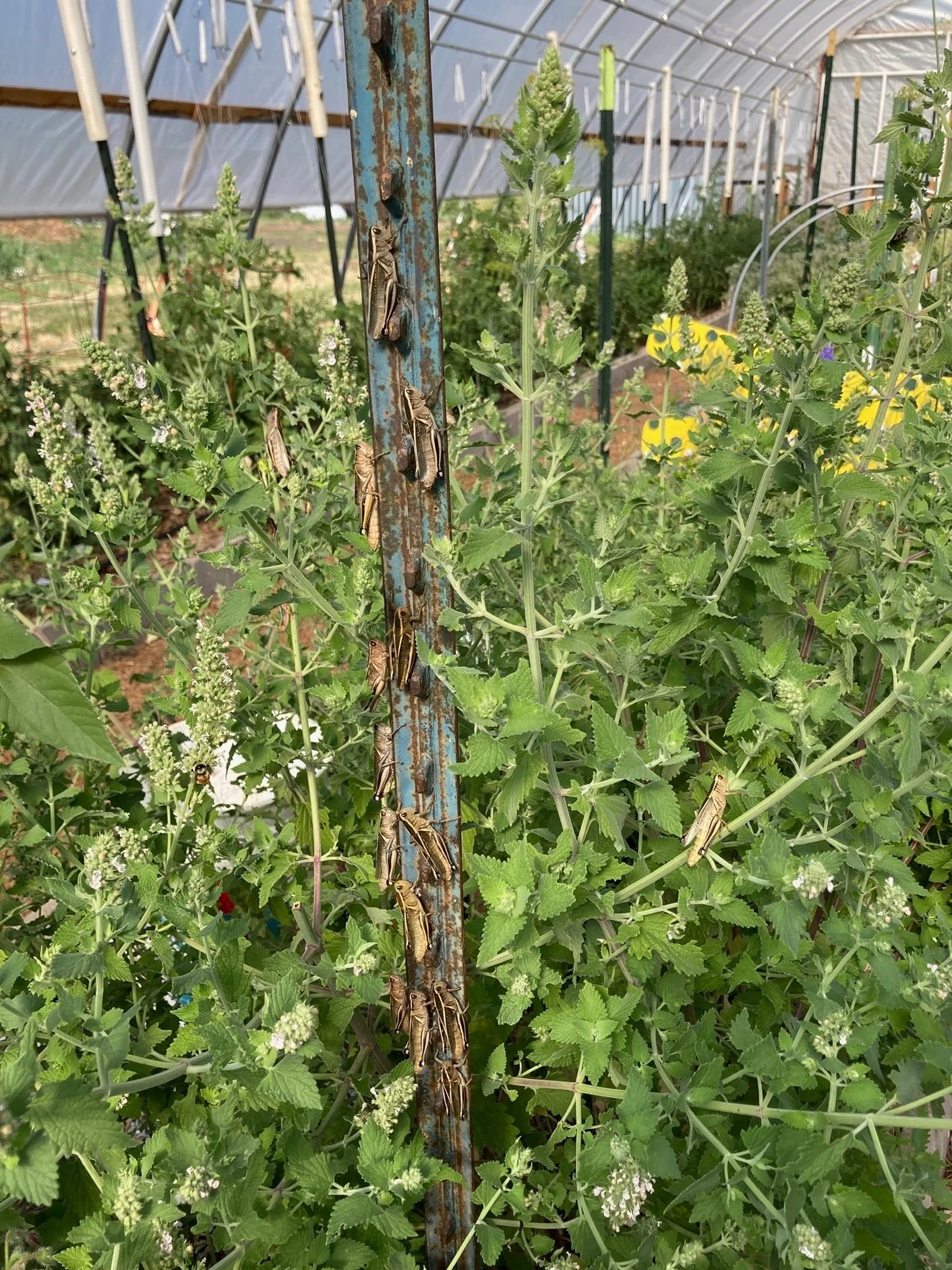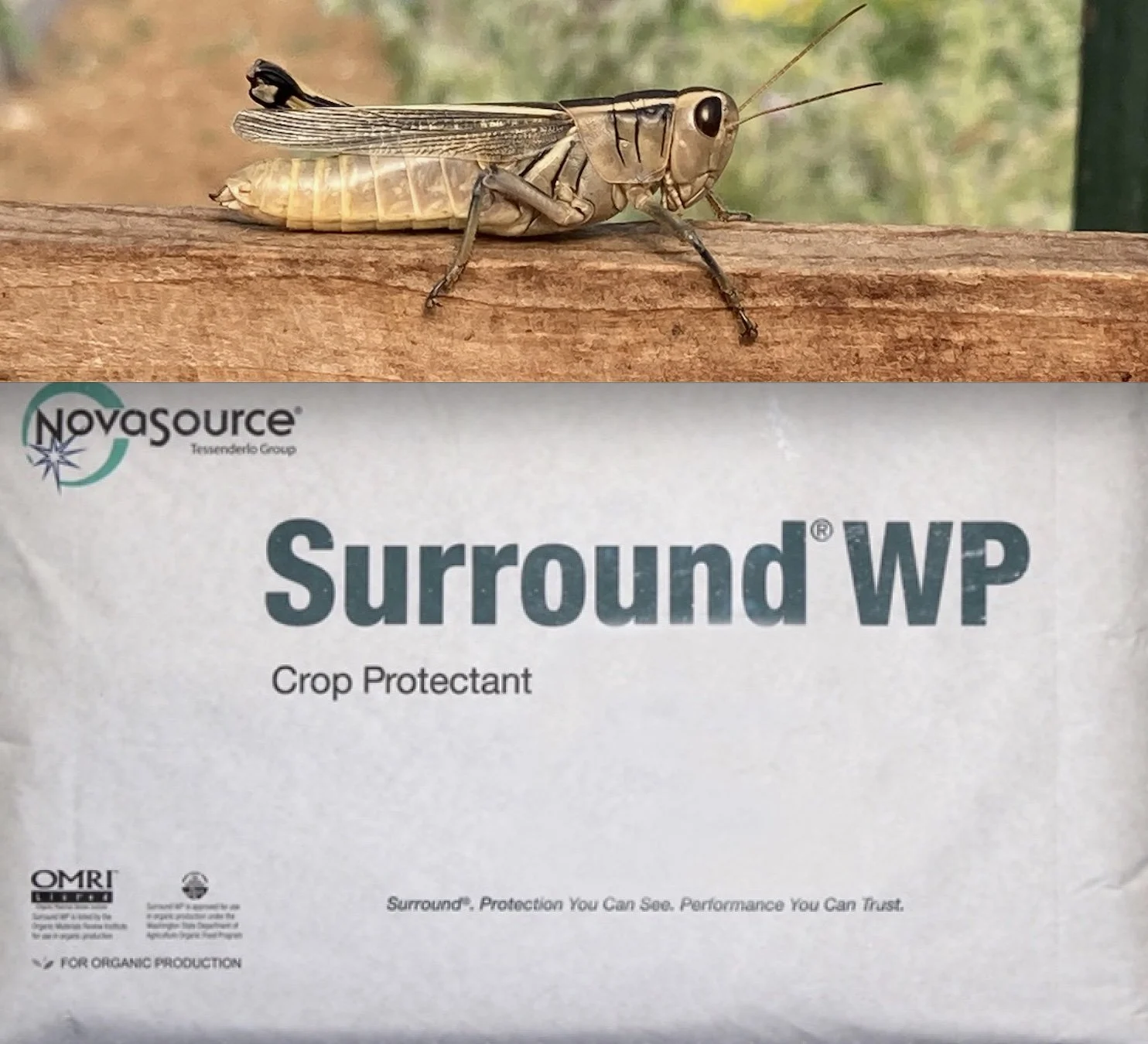Strike Against Garden Pests With IPM
By Vicki Matsumonji
Do you IPM in your garden? It’s not the latest dance move or a password, it’s the agricultural and gardener’s method of controlling and eliminating insect pests without the use of chemicals. IPM is “Integrated Pest Management”, a strategy focusing on prevention of pests and the damage they cause by using techniques that include biological control, habitat manipulation, mechanical and physical control (traps), and finally, eco-friendly chemicals when all else fails...but this is the very last, reluctant straw.
WMCG is very adamant about not using insecticides to eradicate garden pests. Our focus for IPM is primarily“biological control” which can be divided into two parts: 10 percent is based on using insect predators and 90 percent is through our physical effort of spraying plants with soapy water concoctions as a deterrent and finding adult pests and nymphs to drown in a bucket of soapy water. We also seek and destroy eggs to slow reproduction.
For biological control with predators, here are a few of our preferences:
• Beneficial nematodes – 3 choices: Heterorhabditisbacteriophora, Steinernema carpocapsae and Steinernemafeltiae live in soil and attack larvae that feast on the developing roots of plants. Beneficial nematodes aremicroscopic round worms that enter prey through the any openings in the body. Once inside, they release a bacterium from their digestive system that breaks down the insect host’s tissues allowing the nematode to eat the infected tissues. The host will die in 24 to 48 hours, providing a home for the nematode to mate and reproduce more of its kind to be released in the soil to find more insect hosts. Bear in mind that beneficial nematodes are sold by the millions, not by weight. The smallest order is 5 million for $36 from most suppliers.
Beneficial nematodes are very useful in eradicating grubs, the larvae of various beetles. They are very effective on larvae of fungus gnats, thrips, white flies, leaf miners, flies, weevils, root worms to name a few hosts. There are beneficial nematodes that are predatory on the soil surface as well.
Beetle larvae (grubs) are infected with beneficial nematodes and dispatched within 24-48 hours. Right photo is Steinernema feltiae under a microscope of at least 100x magnification.
Microscopic Beneficial nematodes attack a small insect under a microscope
Revolutionary news: Beneficial nematodes are now encapsulated in beads called, NemAttack Beads. Now, the encapsulated nematodes have a longer shelf life of a few months rather than 24 hours in powder form once the package is opened. There’s no need to refrigerate the beads but keep them in a sheltered, dark space. Use the beads as needed and follow the directions on watering to release the nematodes into the soil.
• Ladybugs and their nymphs are always present at the garden. Their favorite meal is the aphid, which is an abundant pest in the garden. Ladybugs have always been a natural occurring predator at the garden. They are sold commercially but fortunately, we don’t have the need to make a purchase.
Ladybugs and their nymphs have a voracious appetite for aphids
• We have purchased Assassin bugs (Zelus renardii), known to be predatory through every stage of life. Assassin bugs target leafhoppers, aphids, early instar caterpillars, flies, mites to name a few appetizers. Assassins are purchased as egg casings glued to strips of cardboard, which are placed around aphid infested plants. When they hatch, the babies immediately start hunting for food. The adults will overwinter at the garden or follow their food source.
Assassin bugs are predatory through their lifetime. The hatchling immediately hunts for aphids. (L) The adult can grow about 2-3 inches in length. (R) Newly hatched assassin bug.
“Habitat manipulation” is a control method that requires more research and study. To delve deeper into this method is to trace a pest’s life cycle and find ways to destroy habitats and eggs of insects that overwinter in plant debris and soil. The most challenging insect pest to study is the grasshopper that plagues us by the thousands each year. We have no way to deter them...until now.
This year, we’re going to use a product called, Surround that we discovered while touring ARBICO Organics in Oro Valley a suburb of Tucson. Surround is a crop protectant that is 95% specially treated calcined kaolin clay.
Mix the white powdered clay with water and spray whole plants for protection from the sun’s heat stress, sunburn, and insect invasions. Surround suppresses insect activity by camouflaging all aspects that attract a pest to the unshielded plant. Surround is an EPA-registered insecticide based on the calcined kaolin properties that impedes egg laying, reduces feeding, impedes grasping, restricts movement, induces paralysis, and causes mortality. The clay covering smothers the grasshoppers the death. We’re hoping grasshoppers will be heavily affected by Surround and succumb to the fine grain of the clay.
We are plagued by thousands of grasshoppers every year. These guys are resting on a post in the high tunnel.
Fingers crossed as we embark on our IPM program of eradicating garden pests without using chemicals and poisons. This new product may help us lower the grasshopper population. We’ll see.

